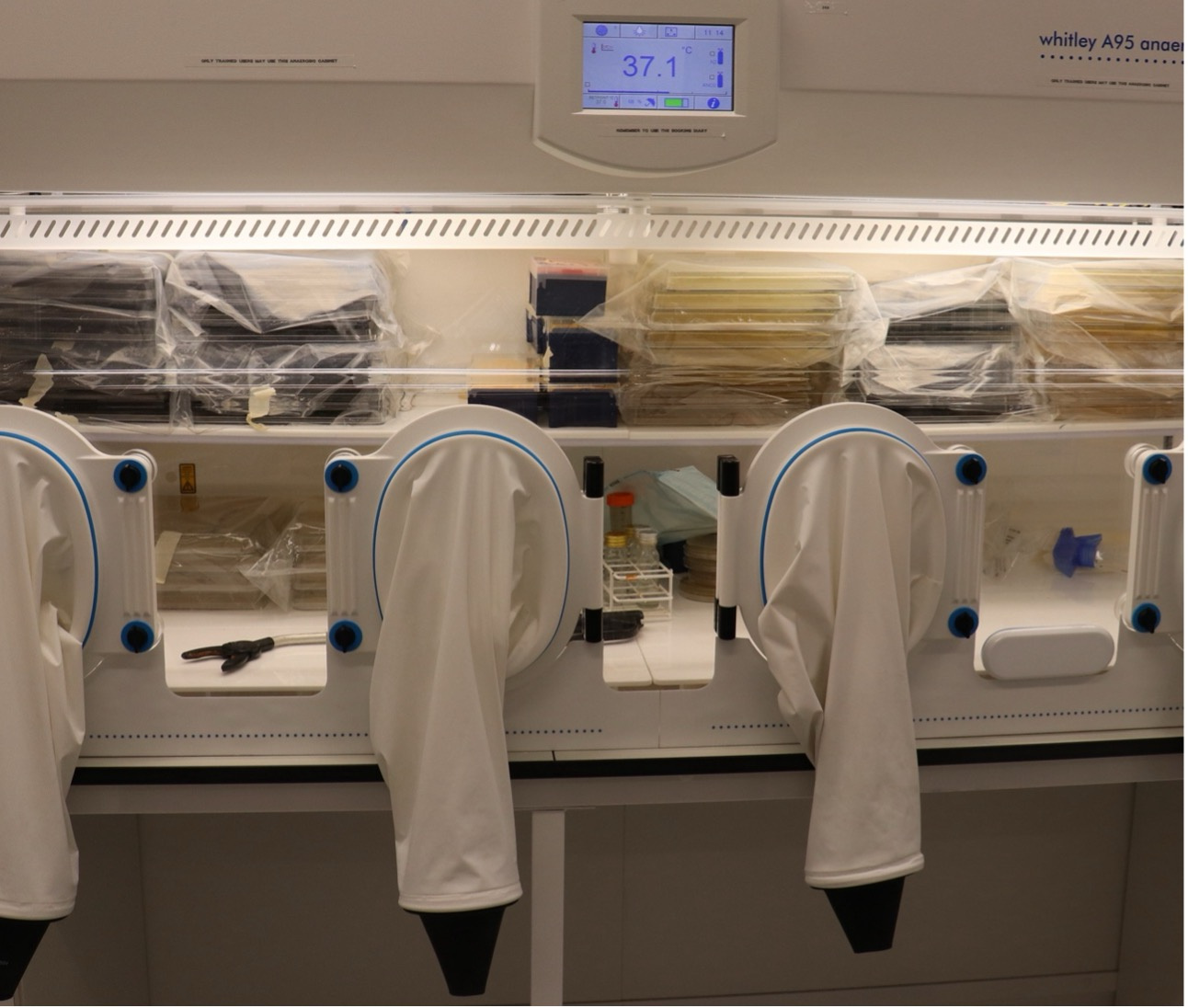Breaking balance – how Bilophila wadsworthia turns rogue
Published in Healthcare & Nursing, Chemistry, and Microbiology

The path to this study was anything but linear. My guiding question was simple: how does Bilophila wadsworthia colonise the gut under high-fat dietary conditions, and what are the consequences for the host? B. wadsworthia blooms in response to animal-derived fat1-3, but the mechanisms driving this expansion—and its broader implications—remained unclear.
To find answers, we integrated genome-wide transposon mutagenesis (TraDIS), metatranscriptomics, metabolomics, histology, and germ-free mouse models. This was a truly multidisciplinary effort—from bacterial genetics to murine models —with each dataset layering new depth into the story.
I initially thought creating a mutant library would be straightforward. After all, the Quadram Institute has extensive expertise in TraDIS. But transforming an obligate anaerobe like B. wadsworthia—a fastidious, sulfidogenic gut bacterium—proved to be a very different challenge. Working in the anaerobic cabinet at 37 °C to generate the libraries felt like operating in the tropics. Still, there was a unique satisfaction in watching the large agar plates darken as B. wadsworthia revealed its presence.

The making of a mutant library: some plates darkened as a result of B. wadsworthia’s sulfidogenic growth.
Our efforts paid off. We discovered that genes encoding bacterial microcompartments (BMCs)—proteinaceous organelles—and those involved in flavin-based electron bifurcation (such as the hdrABC–flxABCD complex) were essential for gut colonisation. These systems enable B. wadsworthia to metabolise organosulfur compounds like taurine and isethionate, releasing hydrogen sulfide (H₂S), acetate, and ethanol in the process.
But colonisation was only the beginning. Surprisingly, B. wadsworthia—although less abundant when co-colonising with a simplified humanized microbiota (SIHUMI)—elicited a greater physiological impact in this context. Mice colonised with SIHUMI + B. wadsworthia showed increased gut permeability, hepatic macrophage infiltration, and liver damage. Ethanol levels in the liver were also modestly elevated, suggesting that microbial cooperation—not B. wadsworthia alone—was disrupting host metabolic balance.
One particularly unexpected finding was B. wadsworthia’s metabolic flexibility. It not only produces ethanol under certain conditions but also consumes it. Crucially, the amount of ethanol produced varied depending on the energy source, highlighting how adaptable—and potentially unpredictable—this bacterium can be in the gut. Our multi-omics analyses showed that in the presence of SIHUMI, B. wadsworthia reprogrammes its metabolism and switches to alternative electron donors like formate.
Analysing the animal data was one of the most eye-opening phases of the project. I had assumed B. wadsworthia alone—reaching high abundance and producing millimolar levels of H₂S—would exert the strongest effects. Instead, the most severe inflammation and barrier damage occurred in the SIHUMI + B. wadsworthia group. At the time, I was puzzled—and honestly unsettled—when two mice in this group died near the end of the experiment. I chalked it up to bad luck. But as the results took shape, a clearer picture emerged: it wasn’t just B. wadsworthia, but its interaction with other microbes that was driving systemic dysfunction. Sometimes, what feels like a setback becomes the start of real insight.
All pointed to a shift in community metabolism and a context-dependent change in microbial behaviour. The host wasn’t responding to B. wadsworthia in isolation, but to its activity within a microbial network. That was perhaps the most exciting discovery: the behaviour of a pathobiont is shaped not just by diet or genetics, but by the company it keeps.
What began as a project to characterise a bacterial mutant library evolved into a broader investigation of microbiome–host interactions. The key insight? Pathogenic potential isn’t solely dictated by the presence of a single species, but by the ecosystem it inhabits.
This project took time, collaboration, and more hours at the blazing anaerobic cabinet than I’d like to admit. But it was worth it to uncover how B. wadsworthia navigates—and reshapes—the gut under dietary pressure. I’m grateful to the multidisciplinary team who helped piece this story together: from bacterial genetics, germ-free mice, metabolomics, and electron microscopy to observe the bacterial microcompartment in the caecum of the mice, the integration of perspectives was critical.

B. wadsworthia in the caecum of mice, showing the formation of bacterial microcompartments. (c) by Mike Paxhia
This work lays a foundation for exploring microbial pathobionts in context—how diet, microbial neighbours, and host responses shape their behaviour. As a next step, we hope to examine how different microbial communities affect B. wadsworthia’s metabolism, especially in human-relevant settings.
For more, read the full paper here
About the Author
Lizbeth Sayavedra is a BBSRC Discovery Fellow at the Quadram Institute. Her research focuses on microbial metabolism and host–microbiome interactions, with a particular interest in sulfidogenic bacteria and dietary modulation of gut pathobionts.
Collaborators
This study was conducted in collaboration with Muhammad Yasir, Andrew Goldson, Arlaine Brion, Gwenaelle Le Gall, Mar Moreno-Gonzalez, Annalisa Altera, Michael D. Paxhia, Martin Warren, George M. Savva, A. Keith Turner, Naiara Beraza, and Arjan Narbad.
References:
- Natividad, J. et al. Bilophila wadsworthia aggravates high fat diet induced metabolic dysfunctions in mice. Nature Communications 9, 2802-2802 (2018).
- Devkota, S. et al. Dietary-fat-induced taurocholic acid promotes pathobiont expansion and colitis in Il10-/- mice. Nature 487, 104-108 (2012).
- Feng, Z. et al. A human stool-derived Bilophila wadsworthia strain caused systemic inflammation in specific-pathogen-free mice. Gut Pathogens 9, 59-59 (2017).
Follow the Topic
-
Nature Communications

An open access, multidisciplinary journal dedicated to publishing high-quality research in all areas of the biological, health, physical, chemical and Earth sciences.
Related Collections
With Collections, you can get published faster and increase your visibility.
Women's Health
Publishing Model: Hybrid
Deadline: Ongoing
Advances in neurodegenerative diseases
Publishing Model: Hybrid
Deadline: Dec 24, 2025




Please sign in or register for FREE
If you are a registered user on Research Communities by Springer Nature, please sign in